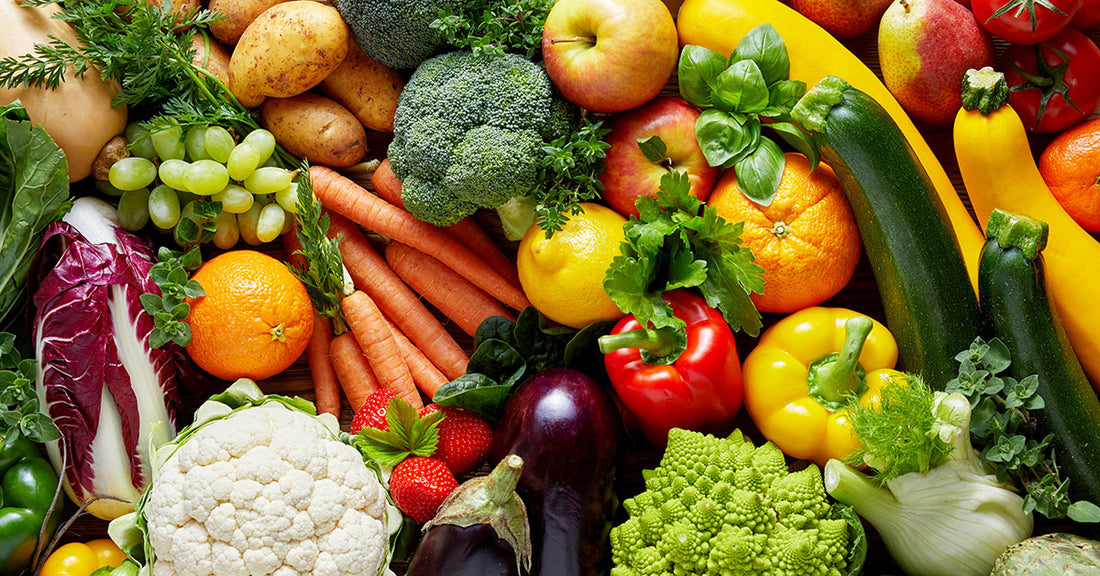A mere 10 percent of adults meet the country’s vegetable intake recommendations (2-3 cups daily). If you’re part of this group, you’re likely missing out on a lot of essential vitamins, minerals, and other nutrients.
Which vegetables will give you the most bang for your nutritional buck? Discover some of the healthiest vegetables to start incorporating into meals.
Broccoli
Broccoli is a cruciferous vegetable and part of the cabbage family. One 80-gram serving contains just 22 calories, 2.6 grams of protein, 0.4 grams of fat, 2.2 grams of carbohydrates, and 2.2 grams of fiber.
Broccoli is also an excellent source of carotene, a precursor of vitamin A found in many green and yellow vegetables, and vitamin C.
Vitamins A and C are both beneficial to the immune system. Vitamin A is also known for supporting healthy vision, growth, and development.
Spinach
Spinach is a leafy green vegetable low in calories but high in essential vitamins and minerals.
One 100-gram serving of spinach contains 3.8 grams of carbs, 0.3 grams of fat, 2.4 grams of fiber, and three grams of protein. Spinach is also rich in vitamin A, vitamin C, magnesium (when it’s cooked), calcium, and iron.
The calcium in spinach supports healthy bones and teeth, and the magnesium promotes relaxation and quality sleep. Vitamins A and C are good for the immune system, and iron helps to maintain healthy red blood cells and prevent anemia.
Asparagus
Asparagus is another low-calorie, highly nutritious vegetable. It’s a member of the lily family and comes in various colors, including green, purple, and white.
One 90-gram serving of asparagus contains 20 calories, 2.2 grams of protein, 0.2 grams of fat, and 1.8 grams of fiber. It’s also an excellent source of vitamin K, folate, vitamin A, and vitamin C.
Vitamin K aids in calcium absorption and aids in making proteins needed for blood clotting. Folate is a B vitamin needed for red blood cell formation and healthy cell function.
Beets
Beets or beetroots are vibrant reddish-purple vegetables with an earthy aroma. One 100-gram serving of beets contains 44 calories, 1.7 grams of protein, 0.2 grams of fat, ten grams of carbs, and two grams of fiber.
Beets are an excellent source of folate, which promotes healthy red blood cells, and manganese, a mineral that aids in bone formation, brain function, and nutrient metabolism. Beets are high in copper, too, a mineral that assists with energy production and neurotransmitter synthesis.
Carrots
Carrots are an incredible source of carotene — specifically, beta-carotene — and are great for your eye health. They offer many other nutritional benefits, though.
For example, carrots contain biotin, a b vitamin that supports fat and protein metabolism, vitamin K, which promotes healthy blood coagulation and bone health, and vitamin B6, which contributes to the conversion of food to energy.
One serving of carrots packs a nutritious punch without many calories. A 100-gram serving contains 41 calories, 0.9 grams of protein, 9.6 grams of carbs, and 2.8 grams of fiber.
Kale
Kale is one of the most nutritious dark leafy greens you can buy — and one of the most low-calorie options. One cup contains 7.35 calories, 0.6 grams of protein, 0.3 grams of fat, and 0.8 grams of fiber.
Adding kale to your diet is a great way to meet your daily vitamin K requirement. One serving contains 68 percent of the recommended daily value. Kale also provides a decent amount of vitamin C and manganese.
Dandelion Greens
Most people see dandelions as pesky weeds, but their leaves, roots, and flowers actually offer numerous health benefits. For example, one cup of dandelion greens contains just 25 calories, 0.4 grams of fat, 5.1 grams of carbohydrates, and 1.9 grams of fiber.
Dandelion greens also contain minerals like calcium, iron, magnesium, and potassium. They’re a good source of vitamins A, C, and K, as well as vitamin E, which promotes healthy skin, eyes, and reproductive organs.
Oat Grass
Most people are familiar with the grain, oats, and all the health benefits it offers. Did you know that the green part of the plant — o oat grass — is also packed with vitamins and minerals?
Oat grass contains vitamins A, C, E, and K, as well as beta-carotene and folate. It’s a good source of calcium and iron, too.
Barley Grass
Barley grass is similar to oat grass, but it comes from the barley plant.
Like oat grass, barley contains vitamins A and C, both of which are good for the immune system and help to fight off inflammation. Barley grass also contains calcium to promote healthy bones and teeth.
Garlic
Garlic is a herb (herbs are subsets of vegetables) known for its strong scent. Like asparagus, it’s also part of the lily family.
A single clove of garlic (each bulb contains about 12 cloves) contains 4.5 calories, 0.2 grams of protein, one gram of carbs, and 0.06 grams of fiber.
Garlic contains many antioxidants and other compounds that promote healthy blood pressure, a robust immune system, and lower cholesterol. The antioxidants in garlic may also help to reduce the risk of dementia and Alzheimer’s disease.
Ginger
Ginger is another healthy and delicious herb with a strong fragrance. The distinct scent of ginger comes from its natural oils, including gingerol, which is the herb’s main bioactive compound.
Gingerol is known for its anti-inflammatory benefits. It also has anti-nausea properties and may reduce pain associated with osteoarthritis.
Add These Veggies to Your Diet Today
From broccoli to beets, the vegetables listed above are some of the healthiest ones to add to your diet.
Now, you know that you need to eat more vegetables. At the same time, though, you also know that it can be difficult to fit 2-3 full cups into your meals each day.
That’s where Substance’s new supplement, Nature’s Sustenance, comes in.
One serving of four capsules contains over 20 fruits, veggies, and greens to help you fill in the gaps and feel your best. Order your first bottle today!

